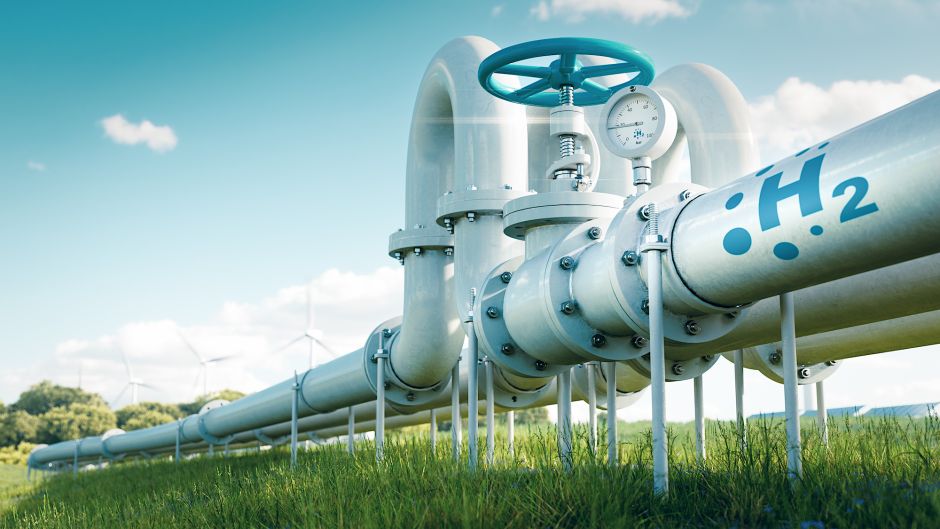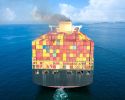Pipeline best for transporting hydrogen

In a few years, two hydrogen-powered Gotland ferries will be put into operation. According to a new report from Lighthouse, the most efficient to transport the Gotland produced hydrogen to the port of Visby for bunkering is by a pipeline system.
If all goes according to plan, the first hydrogen ferry in Gotlandsbolaget's Horizon series will be in service between Visby and Nynäshamn around 2027/28. It is certainly not likely that it will then be able to run on green hydrogen alone, but the ferry's multifuel solution makes it possible to run on most gases, for example biogas, natural gas or gray hydrogen. However, the goal is to run entirely on green hydrogen in the near future. It's easier said than done. To begin with, hydrogen production and transport require a completely different infrastructure than other fuels.
“Per unit of weight, there is 3.5 times as much energy in hydrogen compared to diesel. That's good, of course, but there's another big problem. Hydrogen weighs approximately 17 kg per cubic meter, while diesel weighs approximately 850 kilograms per cubic meter. In other words, a lot of space is required to store hydrogen on board. However, this can be solved in the construction of new ships”, says Björn Samuelsson, researcher in quality engineering at Uppsala University, Campus Gotland.
A more pressing question is how to enable the bunkering of green hydrogen at all. Where will it be produced? And how should it then be transported to the port – in this case the port of Visby? Björn Samuelsson and his colleagues have focused on those questions in the preliminary study project Hydrogen to port – How to transport hydrogen from production to port.
“Hydrogen production with electrolysis does not have large economies of scale, so we believe that production will become a regional phenomenon. And there, of course, access to cheap green electricity becomes important. For Gotland, there is a golden opportunity for a good combination here, as the Aurora wind farm is planned to be built between Gotland and Öland. It is probably better to produce the hydrogen on Gotland than out in the wind farm because it is cheaper to transport electricity than hydrogen.”
From the production site on Gotland, the hydrogen is expected to need to be transported between three and ten miles (probably closer to three) to Visby harbor for bunkering. The hydrogen is then sufficient round trip between Visby and Nynäshamn, which means that you have to bunker every time the ferry calls at Visby (Natural gas needs to be bunkered every two weeks). During high season, when the ferry makes three trips per day, you only have an hour. What is the easiest way to get the hydrogen gas into place?
-“We first thought that you drive on the road with trailers that take approximately one ton each. But that would mean that more than 50 semi-trailers with dangerous goods per day would enter Visby harbor in the summer when there is full activity in the town. It would not only be very expensive, but the emergency services and other authorities would of course have views on it”, says Björn Samuelsson.
Transport by boat then? Also too expensive and complicated. No, according to the report, it is simply pipelines that are needed. A pipeline also has the advantage of being able to act as a warehouse.
“A big question before setting up the pipeline system will be about how to dimension it. If you do it as sparingly as possible in order not to spend more money than is needed on the infrastructure, you not only risk problems if the supply of hydrogen needs to be increased, but you also lose the opportunity to store hydrogen. That possibility can create added value when the wind farm receives surplus electricity.”
It is not only the technology and the distribution system that are a challenge. Standards and regulations also stand in the way. Hydrogen, for example, embrittle metals.
“At present, however, the standards for it are oversized, according to the material experts. This means that the material will be more expensive than what is actually required”, says Björn Samuelsson-
He continues:
“In addition, some laws and regulations are missing. Today, hydrogen is used in the petrochemical industry, but it takes place on raff, i.e. in fenced areas. When hydrogen is to be released into public environments, standards and regulations must be created that are technically and economically sustainable.”
The report Hydrogen to port – How to transport hydrogen from production to port has been authored by:
Björn Samuelsson, Uppsala University
Jim Allansson, Uppsala University
Ellinor Forsström, RISE
In association with:
Christer Bruzelius, Gotland Tech Development
Charlotta Solerud, Camilla Strümpel, Ports of Stockholm
-
 EU: Sjöfartens utsläpp ökar
EU: Sjöfartens utsläpp ökar -
 Sociala relationer påverkar val av bränsle
Sociala relationer påverkar val av bränsle -
 Sjöfartens omställning kräver ”mjukare” påtryckningar
Sjöfartens omställning kräver ”mjukare” påtryckningar -
 Hon hade avtalad tid med Kapten ynkrygg
Hon hade avtalad tid med Kapten ynkrygg -
 Lighthouse omvärldsanalys 2025 – osäkerhet och tullar präglar sjöfarten
Lighthouse omvärldsanalys 2025 – osäkerhet och tullar präglar sjöfarten -
 Se seminariet Shipping in the Marine Environment
Se seminariet Shipping in the Marine Environment -
 Vad betyder egentligen de 90 procenten?
Vad betyder egentligen de 90 procenten? -
 Hålla där...
Hålla där... -
 Ny rapport: Klimatförändringarna ett hot mot de flesta större hamnar i världen
Ny rapport: Klimatförändringarna ett hot mot de flesta större hamnar i världen -
 Nytt AI-verktyg tar lasthanteringen till nästa nivå
Nytt AI-verktyg tar lasthanteringen till nästa nivå

